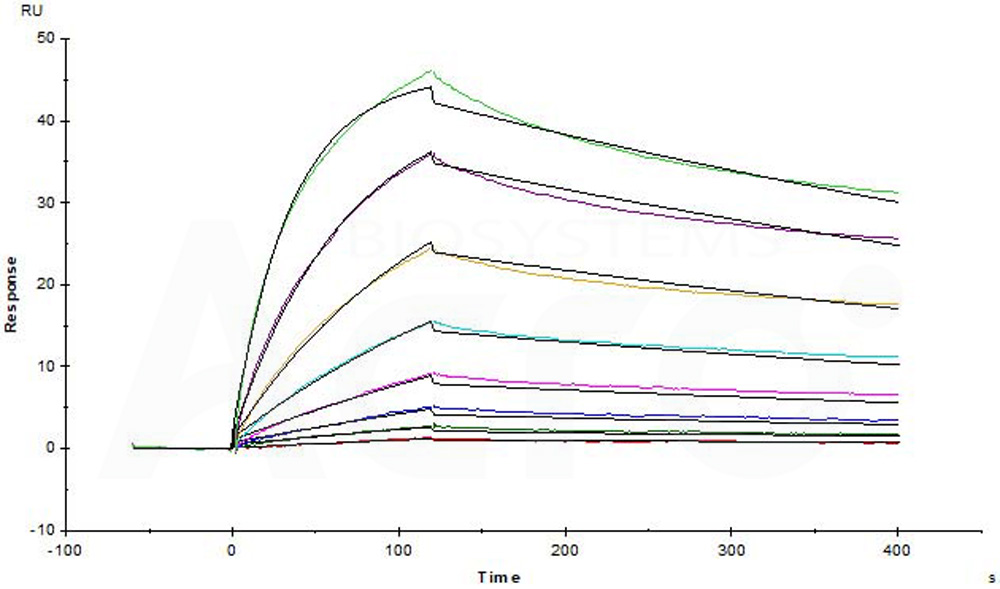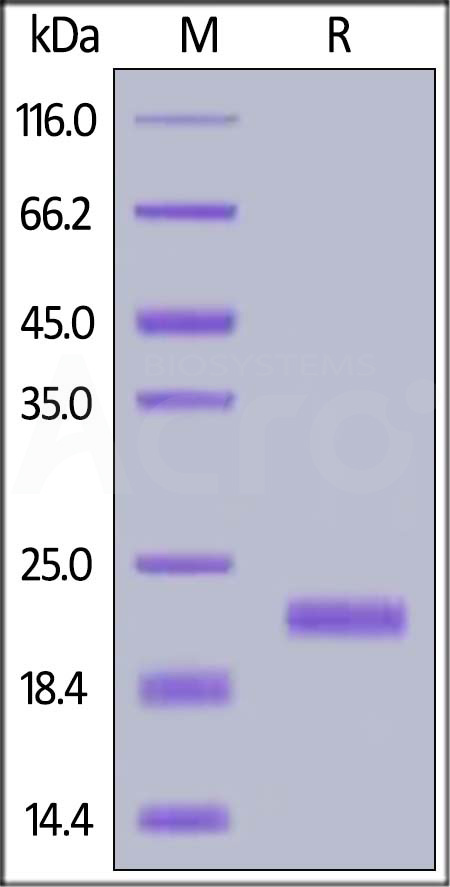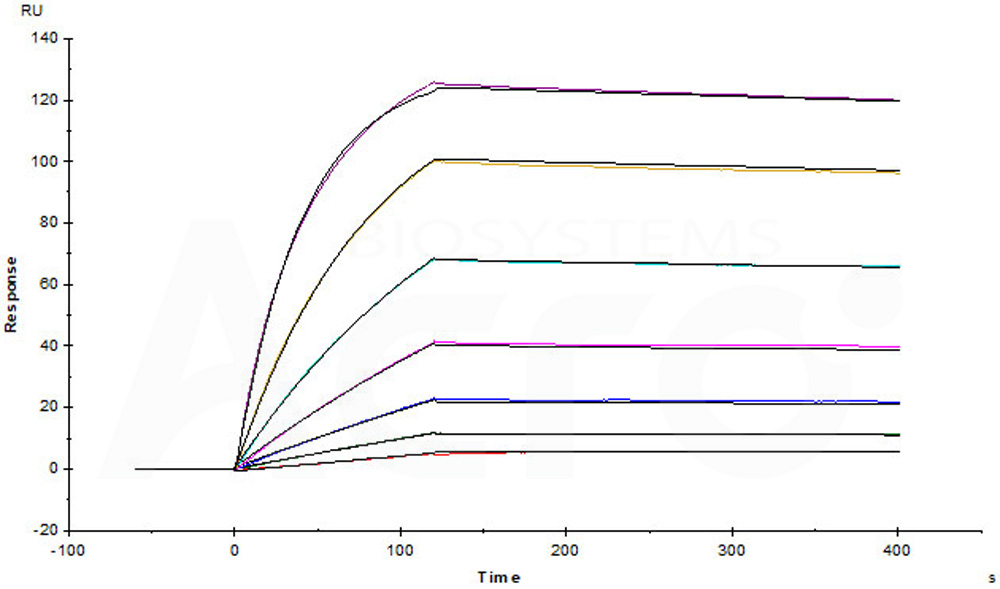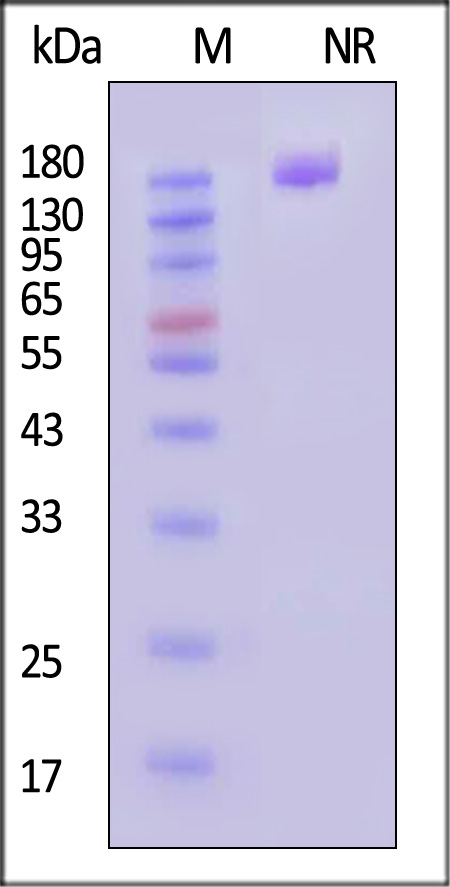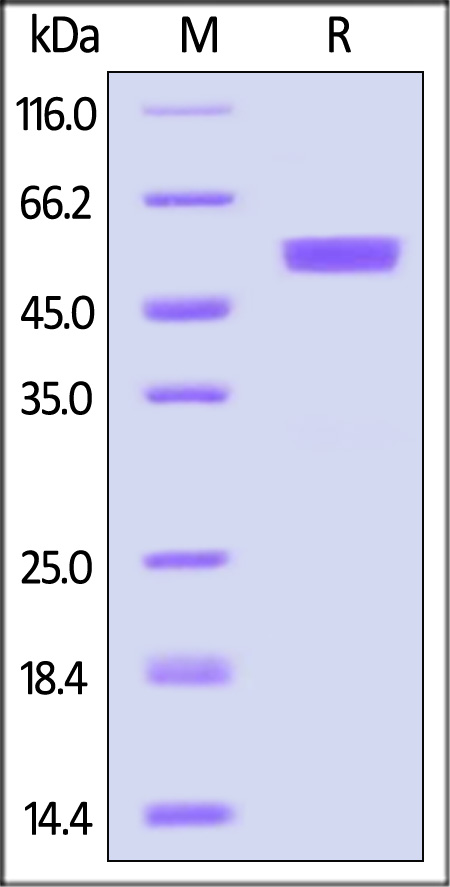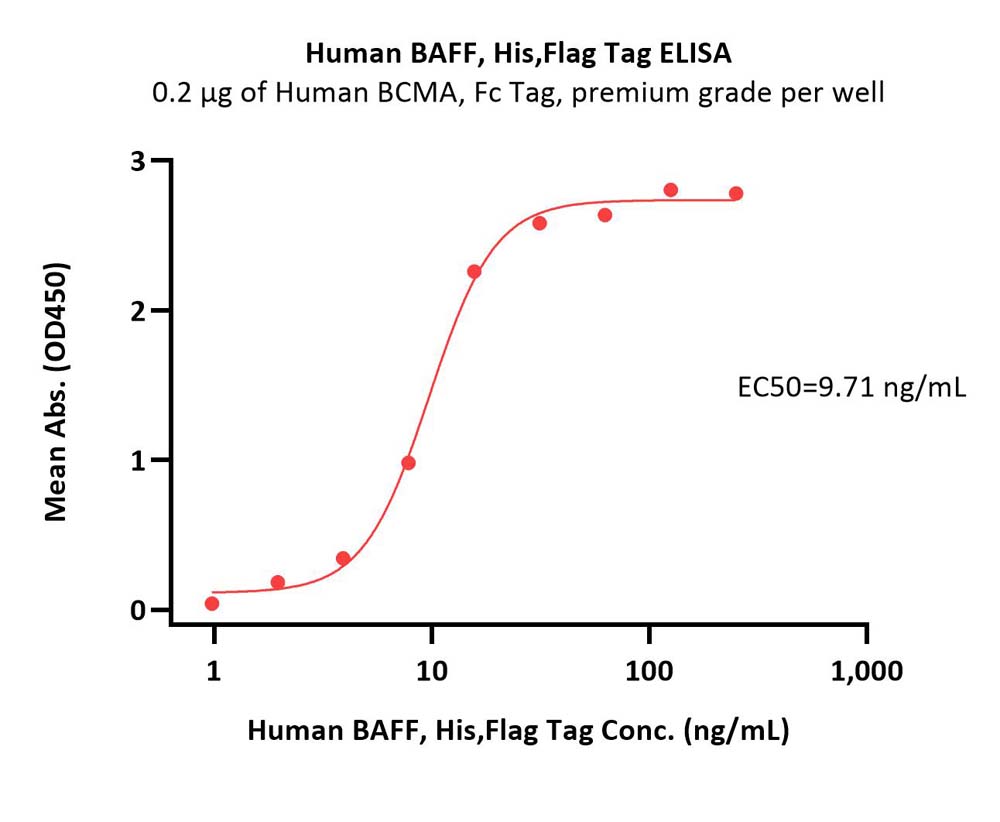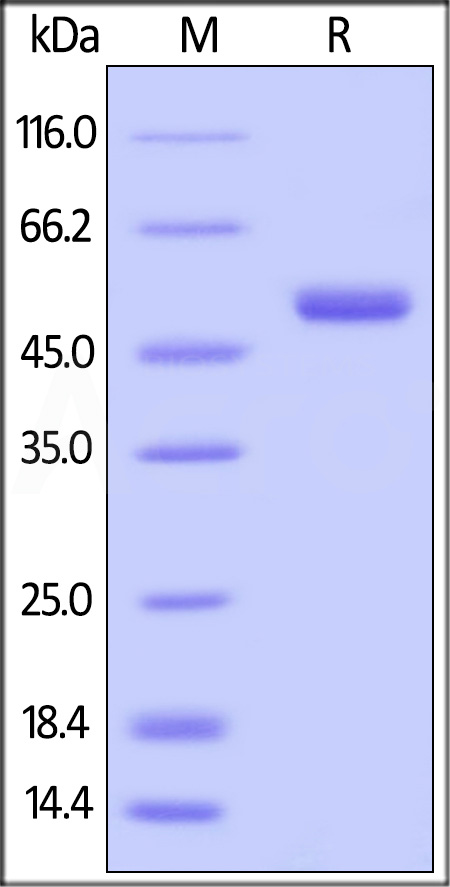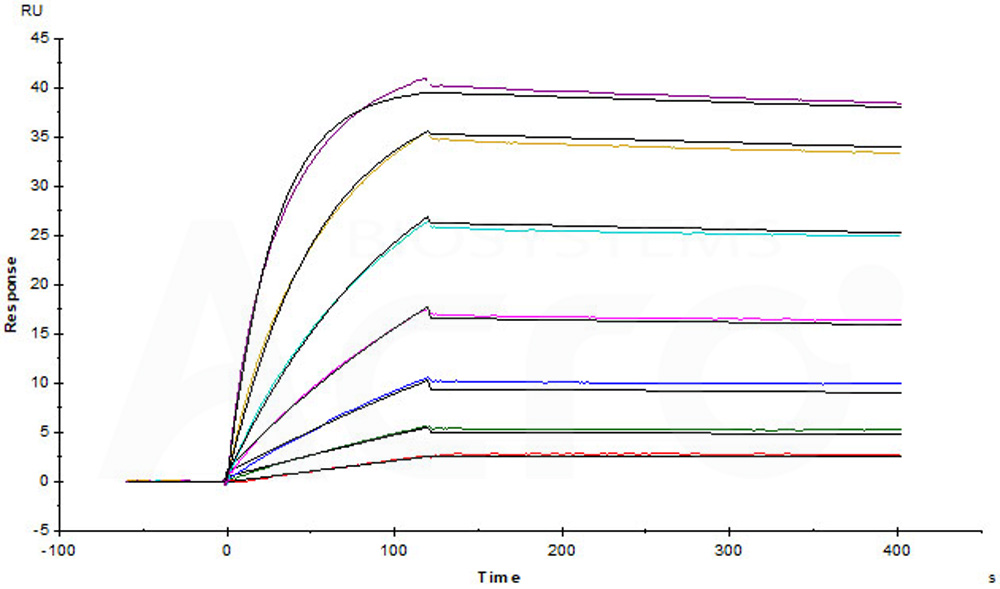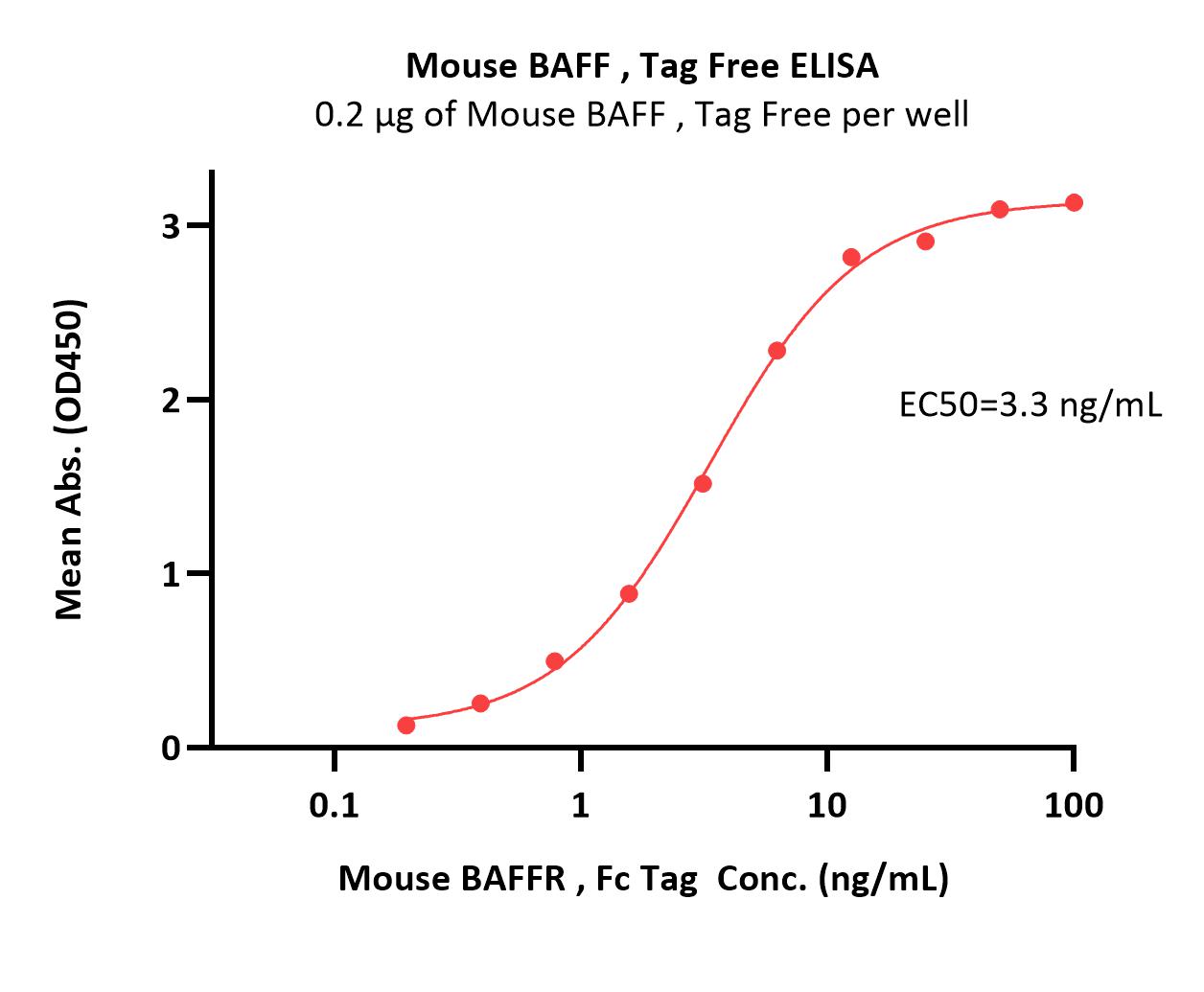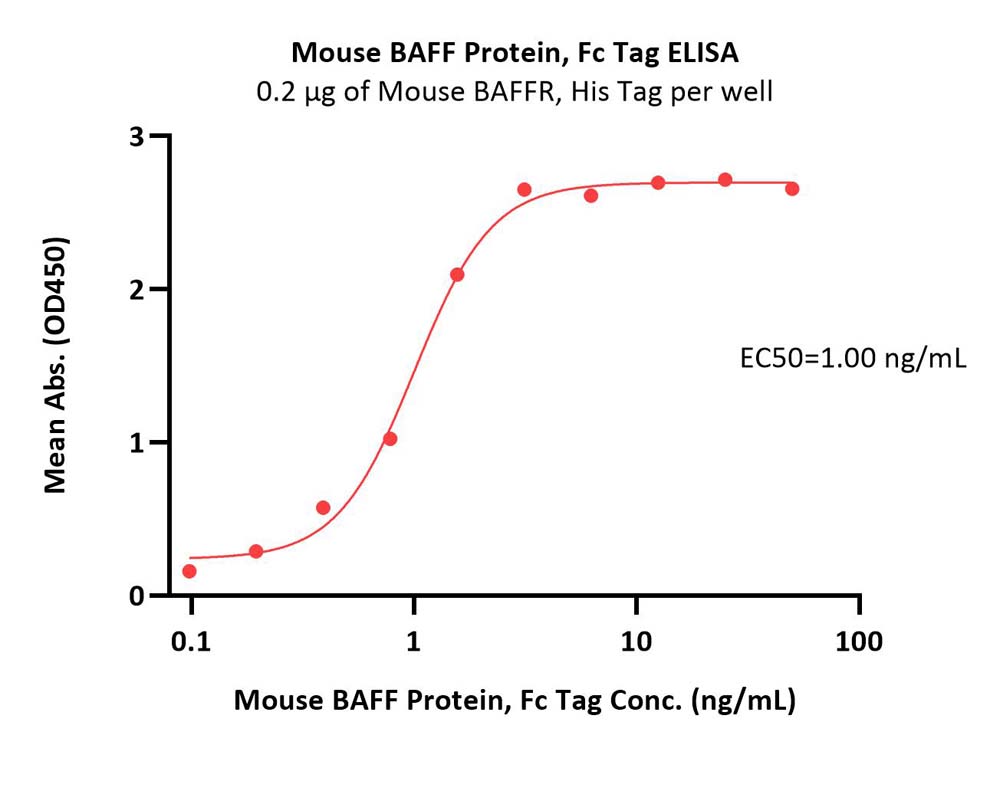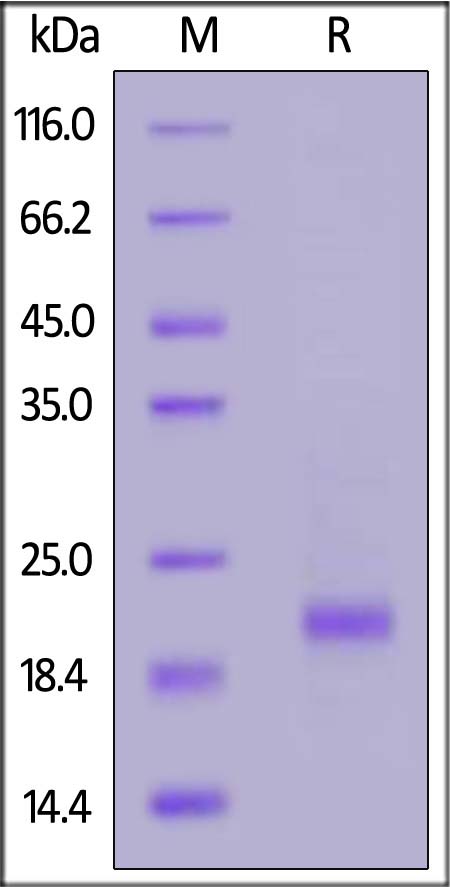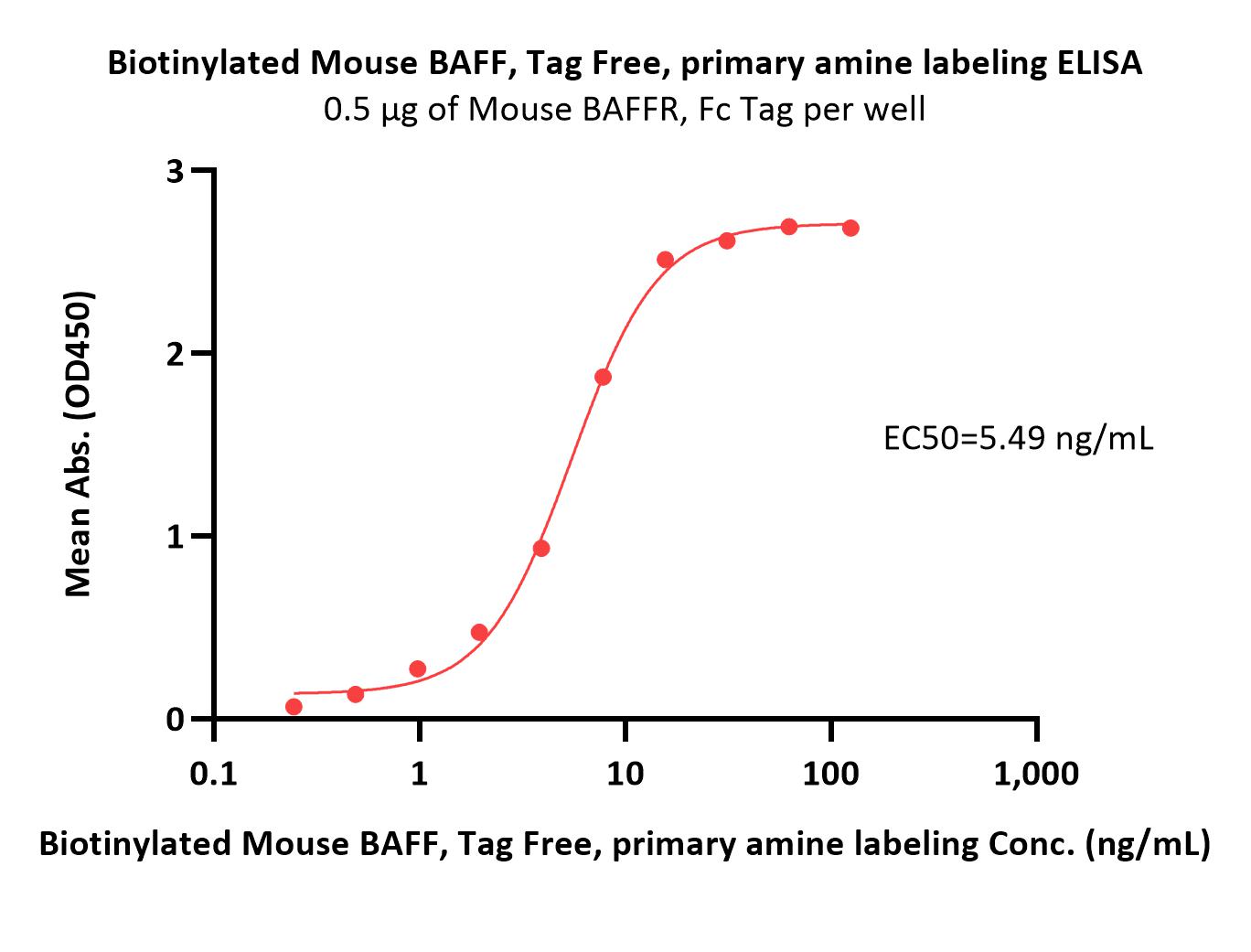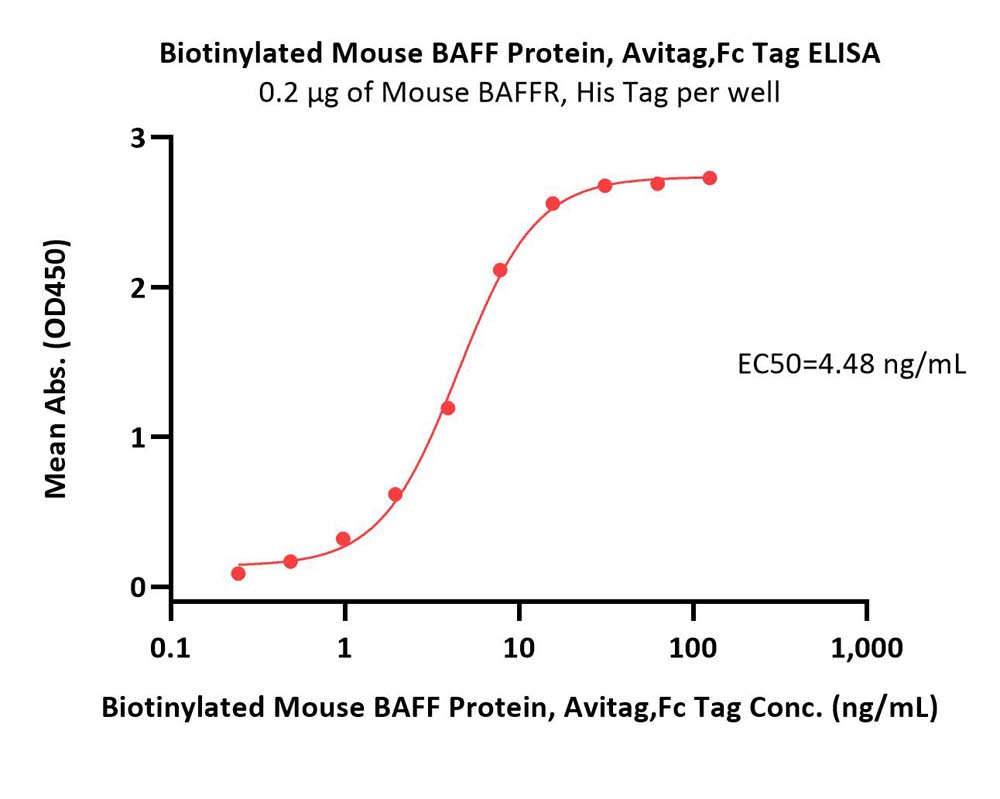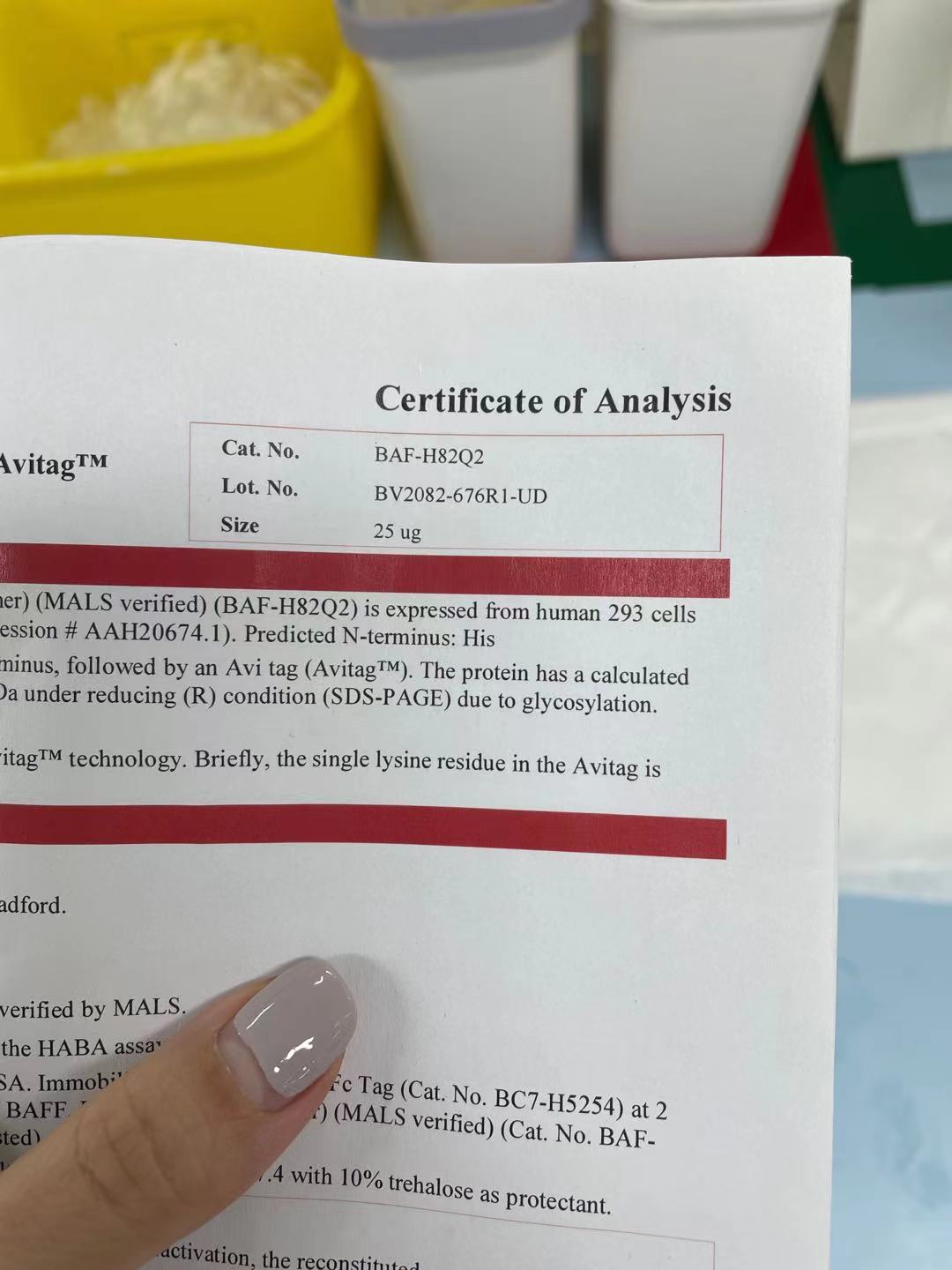BAFF分子别名
TNFSF13B,BAFF,BLYS,CD257,DTL,TALL1,THANK,TNFSF20,ZTNF4,TALL-1
BAFF分子背景
B-cell activating factor (BAFF) is also known as tumor necrosis factor ligand superfamily member 13B , TNFSF13B, BAFF, B Lymphocyte Stimulator (BLyS) , cluster of differentiation 257 (CD257), DTL, TNF- and APOL-related leukocyte expressed ligand (TALL-1), THANK, TNFSF20, ZTNF4, and is a cytokine that belongs to the tumor necrosis factor (TNF) ligand family. This cytokine is a ligand for receptors TNFRSF13B/TACI, TNFRSF17/BCMA, and TNFRSF13C/BAFFR. This cytokine is expressed in B cell lineage cells, and acts as a potent B cell activator. It has been also shown to play an important role in the proliferation and differentiation of B cells. It is expressed as transmembrane protein on various cell types including monocytes, dendritic cells and bone marrow stromal cells. BAFF is the natural ligand of three unusual tumor necrosis factor receptors named BAFF-R, TACI, and BCMA, all of which have differing binding affinities for it. These receptors are expressed mainly on mature B lymphocytes (TACI is also found on a subset of T-cells and BCMA on plasma cells). TACI binds worst since its affinity is higher for a protein similar to BAFF, called a proliferation-inducing ligand (APRIL). BCMA displays an intermediate binding phenotype and will work with either BAFF or APRIL to varying degrees. Signaling through BAFF-R and BCMA stimulates B lymphocytes to undergo proliferation and to counter apoptosis. All these ligands act as heterotrimers (i.e. three of the same molecule) interacting with heterotrimeric receptors, although BAFF has been known to be active as either a hetero- or homotrimer. BAFF acts as a potent B cell activator and has been shown to play an important role in the proliferation and differentiation of B cells.

























 Star Ribbon预染蛋白Marker蛋白质标记物是生物研究和药物开发的重要组成部分。无论是用于蛋白质电泳还是western blot,我们的预染色蛋白质标记物帮助您快速确定目标蛋白质的分子量或评估转移效率。Fc受体蛋白治疗性抗体的功效取决于Fab片段及其对目标抗原的结合活性,还取决于Fc片段及其与关键Fc受体的相互作用。因此,在抗体工程中候选物必须针对一系列受体进行测试。探索我们的重组Fc受体蛋白质的全面收藏!
Star Ribbon预染蛋白Marker蛋白质标记物是生物研究和药物开发的重要组成部分。无论是用于蛋白质电泳还是western blot,我们的预染色蛋白质标记物帮助您快速确定目标蛋白质的分子量或评估转移效率。Fc受体蛋白治疗性抗体的功效取决于Fab片段及其对目标抗原的结合活性,还取决于Fc片段及其与关键Fc受体的相互作用。因此,在抗体工程中候选物必须针对一系列受体进行测试。探索我们的重组Fc受体蛋白质的全面收藏!




























 膜杰作
膜杰作 Star Staining
Star Staining










